This tutorial on how to make Swiss Meringue buttercream is the only resource you’ll need to make the smoothest, silkiest frosting!

The topic of Swiss meringue buttercream comes up regularly in my Baking group on Facebook and in comments on some of my recipes here — how to make it, but more often how to deal with it when it’s just not cooperating.
Meringue buttercreams can be a bit temperamental, but whatever state you’ve got it in (provided you started with a stiff peak meringue) is totally saveable.
If you love Swiss meringue buttercream as much as I do, hopefully, you’ll find these tips useful.
If you’ve never tried it and are intimidated by it, I hope this tutorial will give you the confidence to give it a shot.
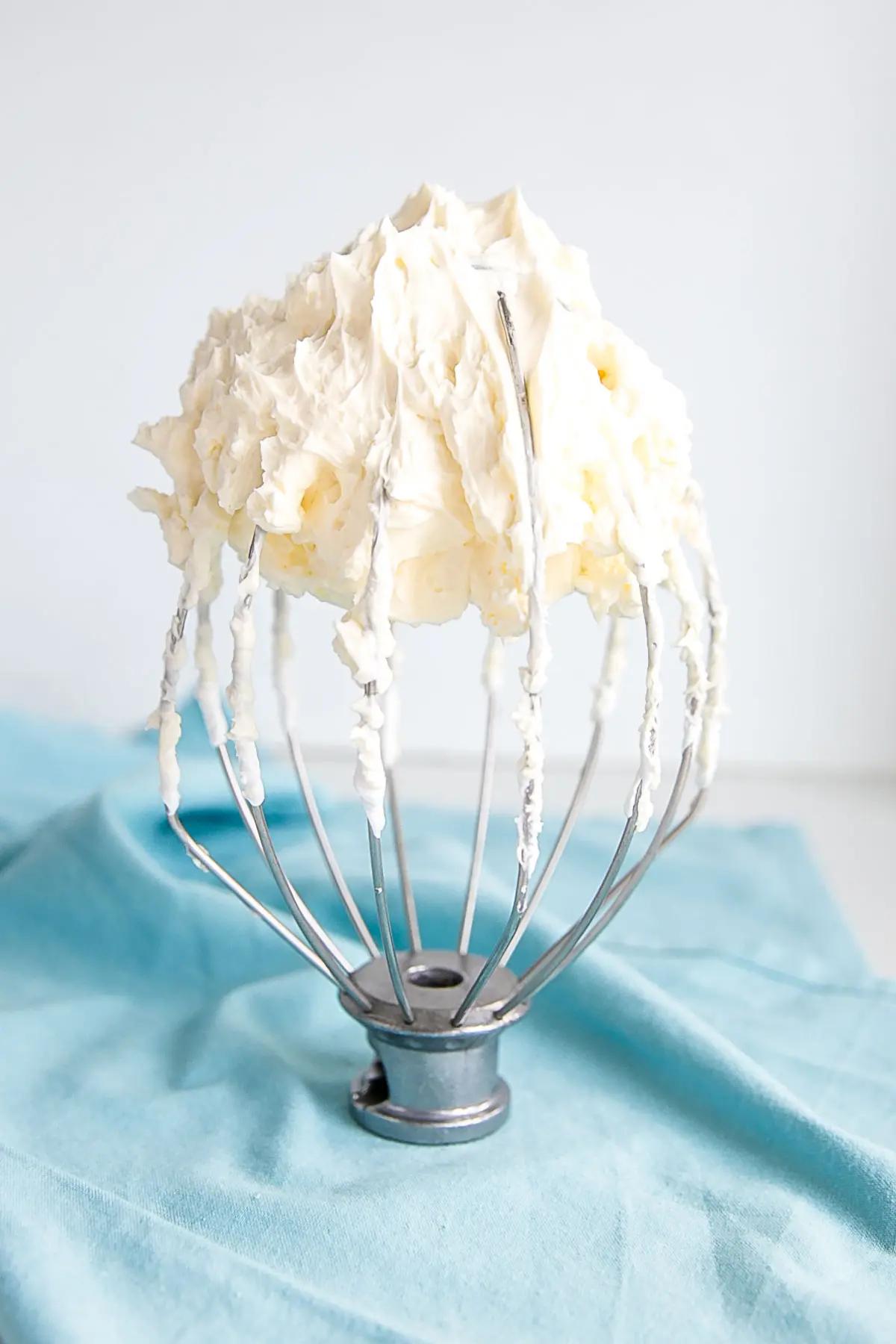
What is Swiss Meringue Buttercream?
Though more involved than an American buttercream, Swiss meringue buttercream (SMBC) is the easiest of the meringue buttercreams. It involves cooking eggs and sugar over a double boiler, whipping them into a meringue, then adding butter and flavorings.
The other two meringue buttercreams (Italian and French) both involve pouring boiling sugar into a partially whipped egg and sugar mixture.
They are equally delicious and known to be a bit more stable, but I find boiling sugar to be stressful and intimidating, so generally stay away from it as much as possible.
If you’re feeling adventurous though and you’ve tried SMBC before, I encourage you to give those a go and see how you like them.
Swiss meringue buttercream consists of 3 very simple ingredients:
- Egg whites
- Sugar
- Unsalted butter

From there, you can flavor to your heart’s content. A simple and standard recipe will include vanilla, but the flavor possibilities are limited only by your imagination.
You can add melted chocolate for a milk, white, or dark chocolate Swiss meringue buttercream, freeze-dried berries for fruit flavor and color, peanut butter/peanut butter powder (preferred), or choose from a variety of flavorings to add in.
How to Make Swiss Meringue Buttercream
I’m going to take you through each step of the process here and call out tips or issues you may run into.
I recommend using a stand mixer for this buttercream. You likely could do it with a hand mixer, but it would be a more painful process — you’d be holding that hand mixer for a good 20+mins. As such, the steps I describe are for a stand mixer, but you can adapt to a hand mixer if that’s all you have to work with.
The very first thing you must do, this is NOT optional, is:
Step #1 – Wipe down all tools with lemon juice or vinegar
To help ensure a stable and stiff meringue, you must make sure that everything that will come in contact with the egg whites is completely grease-free. This includes things like your:
- mixer bowl
- whisk attachment
- hand whisk
- measuring cup (that will be used to scoop sugar)
- small bowl(s) (to crack eggs into when separating whites)

Grease is meringue’s enemy.
Even the tiniest speck of grease (or egg yolk) will cause the meringue to not whip to a stiff peak and result in a less-than-perfect (aka dense and greasy) Swiss meringue buttercream.
Another important tip here is to not use plastic tools, especially bowls, when making Swiss meringue. Plastic has a tendency to retain grease no matter how thoroughly it’s cleaned.
Best to be safe and stick to metal (preferred) or glass bowls.
Step #2 – Bring a medium pot of water to a simmer (1-2 inches of water)
You’ll want a pot that’s big enough to comfortably place your mixer bowl onto, but not so big that the bottom of the bowl touches the water.
You want a maximum of 1-2 inches of water in the pot. Bring this to a boil, then reduce to a low simmer.
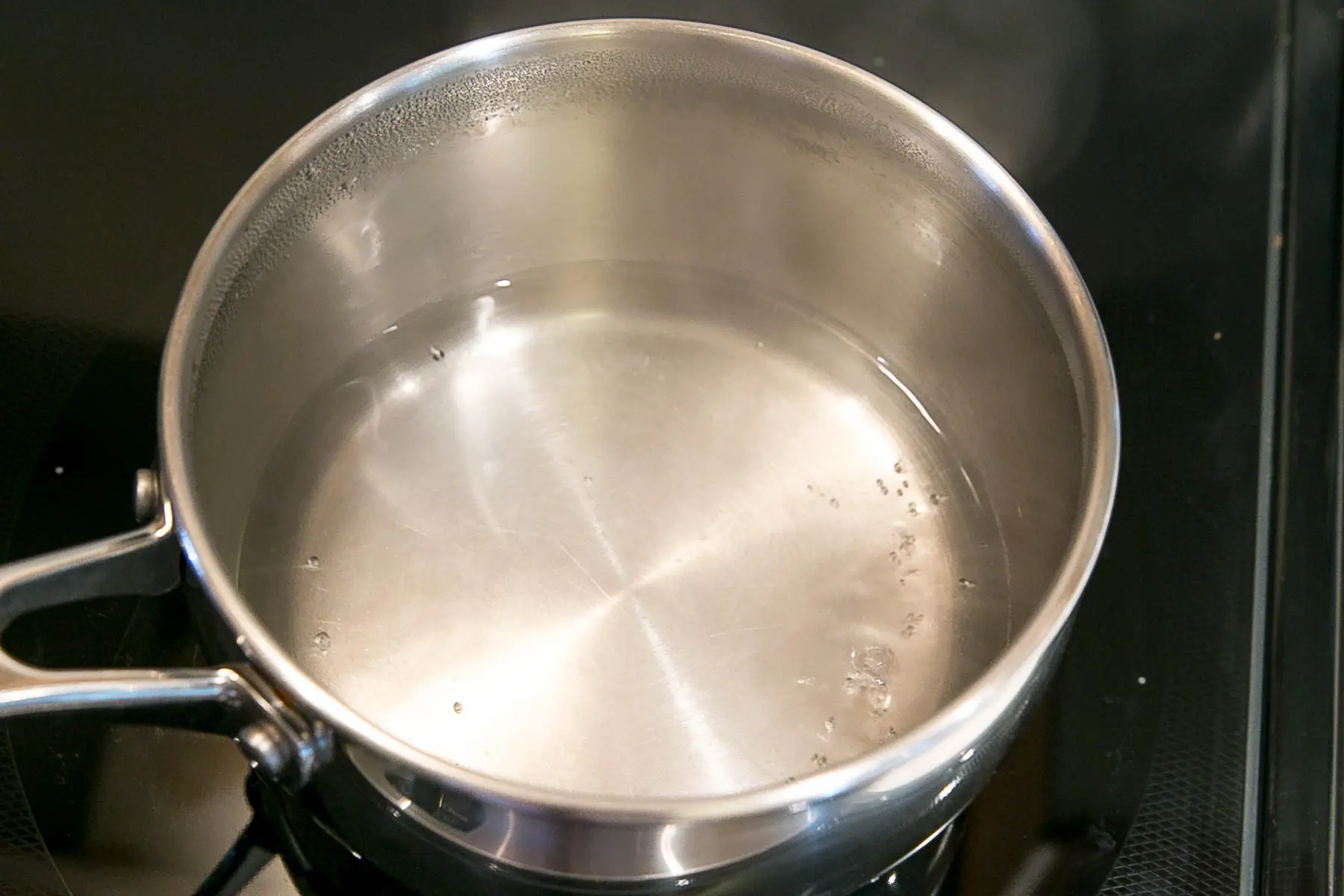
Step #3 – Separate your egg whites
Separate each egg white into a small bowl, then transfer into your mixer bowl.
Do not separate the egg whites directly into your mixer bowl. If you do that and have even one cracked yolk, you will ruin the whole batch of whites.
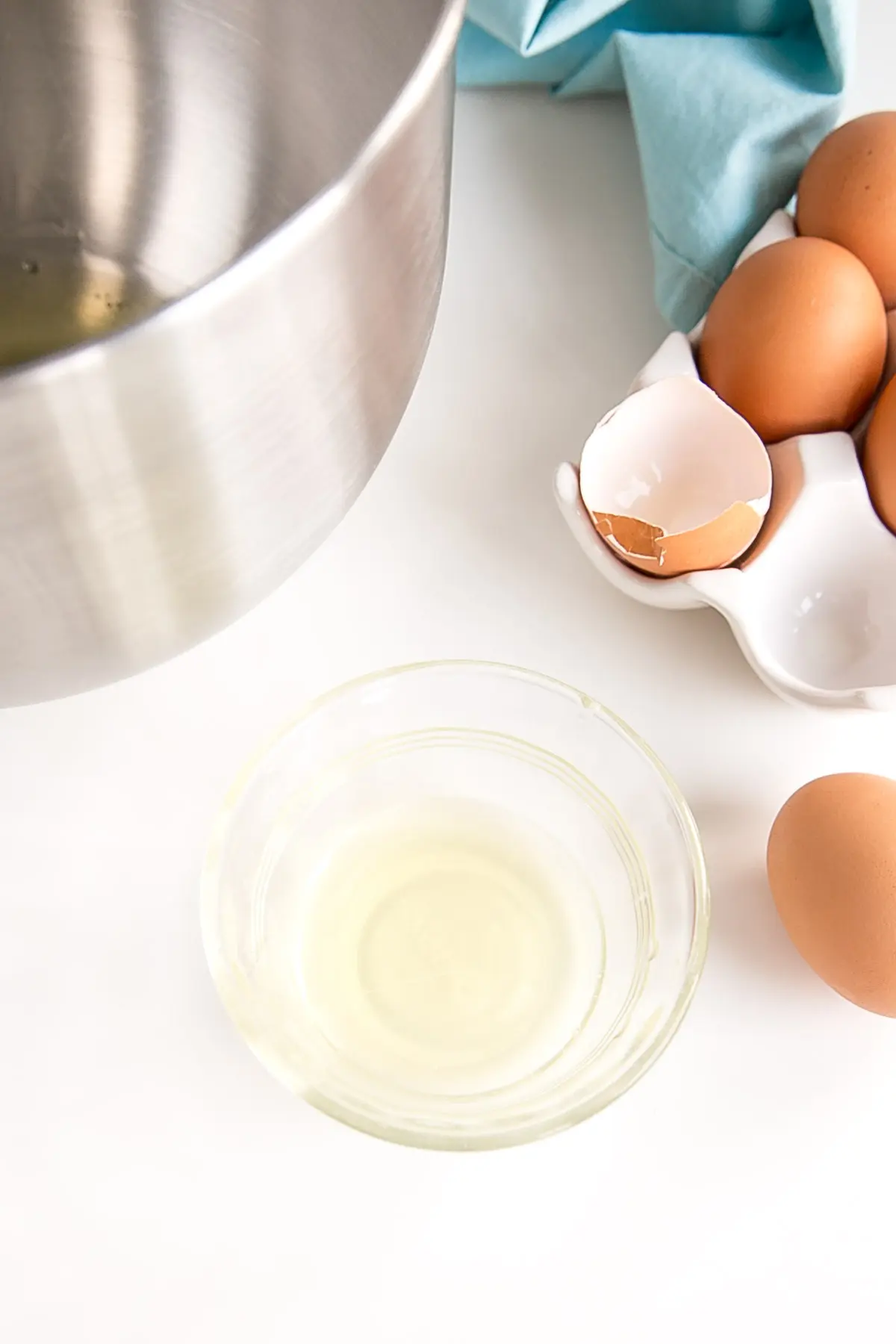
It’s best to separate each egg individually.
Even a speck of yolk will cause the meringue to not whip up properly. Do not attempt to make a meringue if your egg whites are not completely yolk-free.
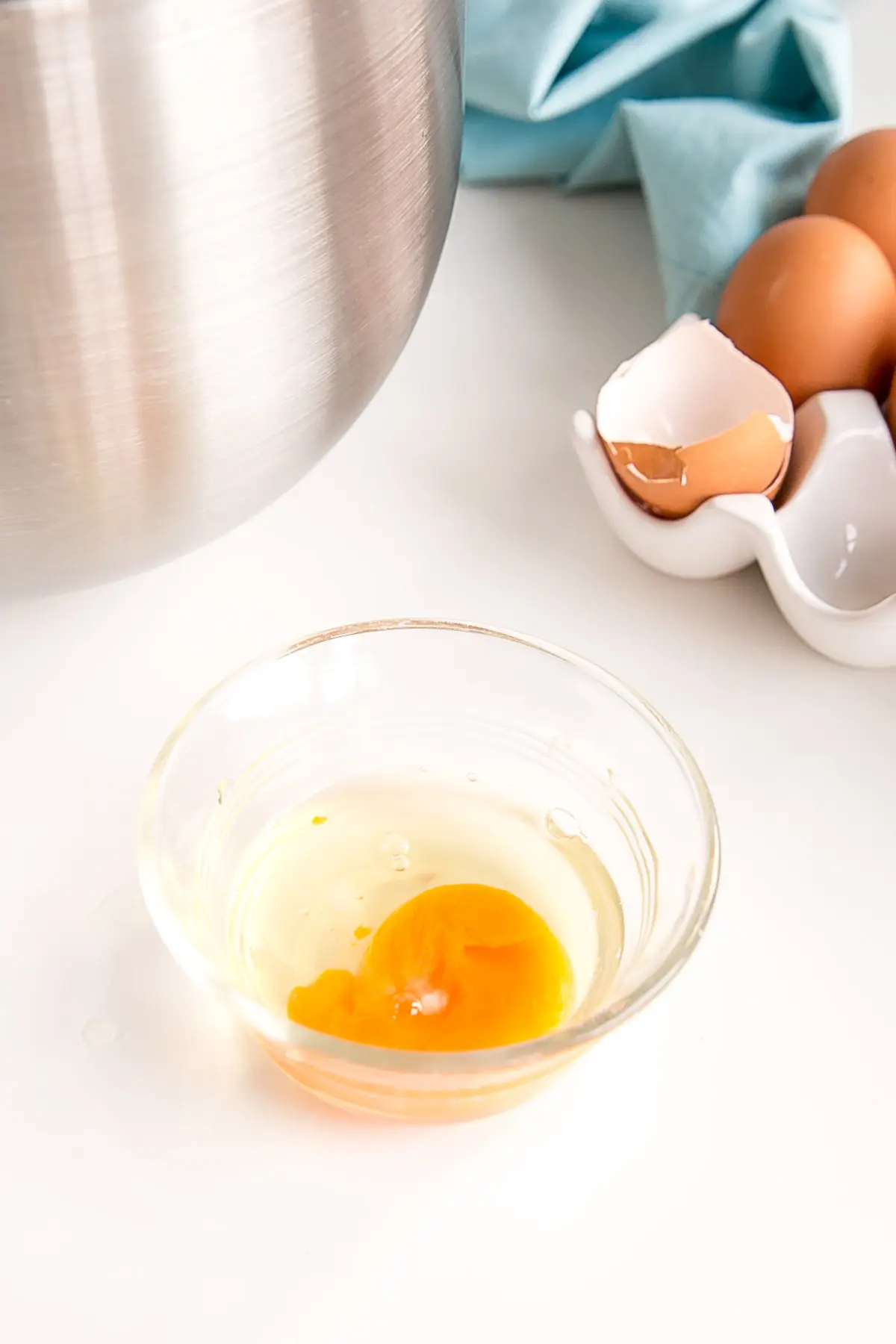
Note that the eggs do not need to be room temperature, since you’ll be cooking them anyhow.
Some people have had success with carton egg whites but, at this time, I cannot recommend them myself.
The carton whites I have tried have caused my meringue to stay flat and never stiffen. If you do want to experiment with carton whites, make sure the carton says something like “egg whites only” or similar.
Step #4 – Cook your egg whites & sugar
Once you’ve separated all your eggs, add them and your sugar into your mixer bowl and place it over the pot of simmering water.
I stir constantly at this point, with a clean hand whisk, to make sure the egg whites cook evenly. This process will take 2-3 mins depending on the number of egg whites you’re working with.
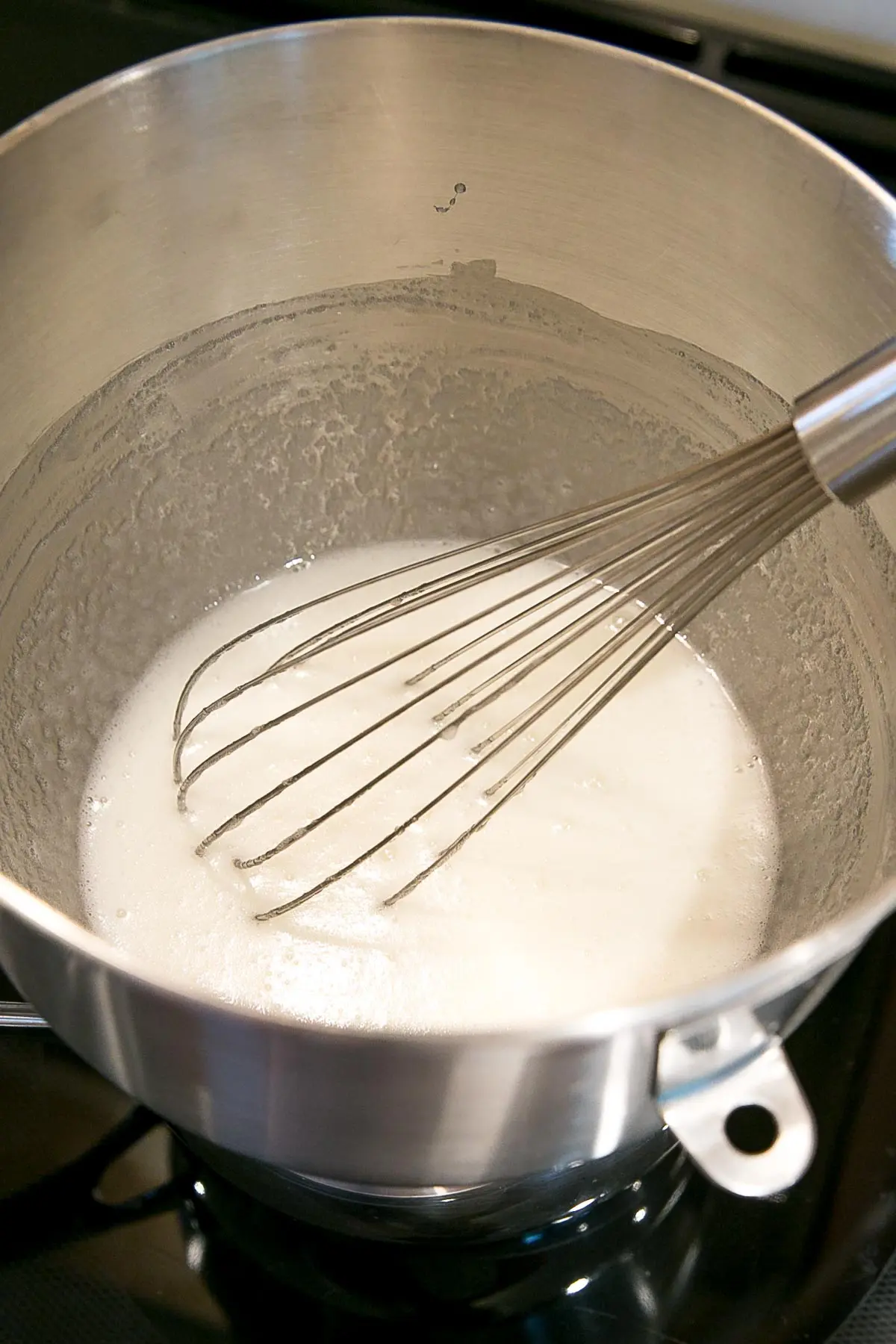
You’ll know the egg whites are done when the mixture is hot and no longer grainy to the touch.
I dip a (clean) finger into the mixture and rub it between my thumb and forefinger. If there is any graininess at all, I keep cooking them.

You want to make sure the mixture is hot to the touch too. Ideally, you’d use a candy thermometer to check that it has reached 160F. This is the most accurate way to make sure your whites are cooked fully.
I am too lazy to whip out a thermometer, and not concerned about eating raw eggs, so I do the touch test. If this is a concern for you, I recommend using a thermometer.
Step #5 – Whip your meringue
Remove your mixer bowl from the pot, wipe the bottom of the bowl, and place it on your stand mixer. Attach the whisk attachment and begin whipping.
I usually crank it right up to high speed (about 8-9 on my KitchenAid). You’ll want to whip this until the bowl is completely cool to the touch — this can take anywhere from 5-10mins.
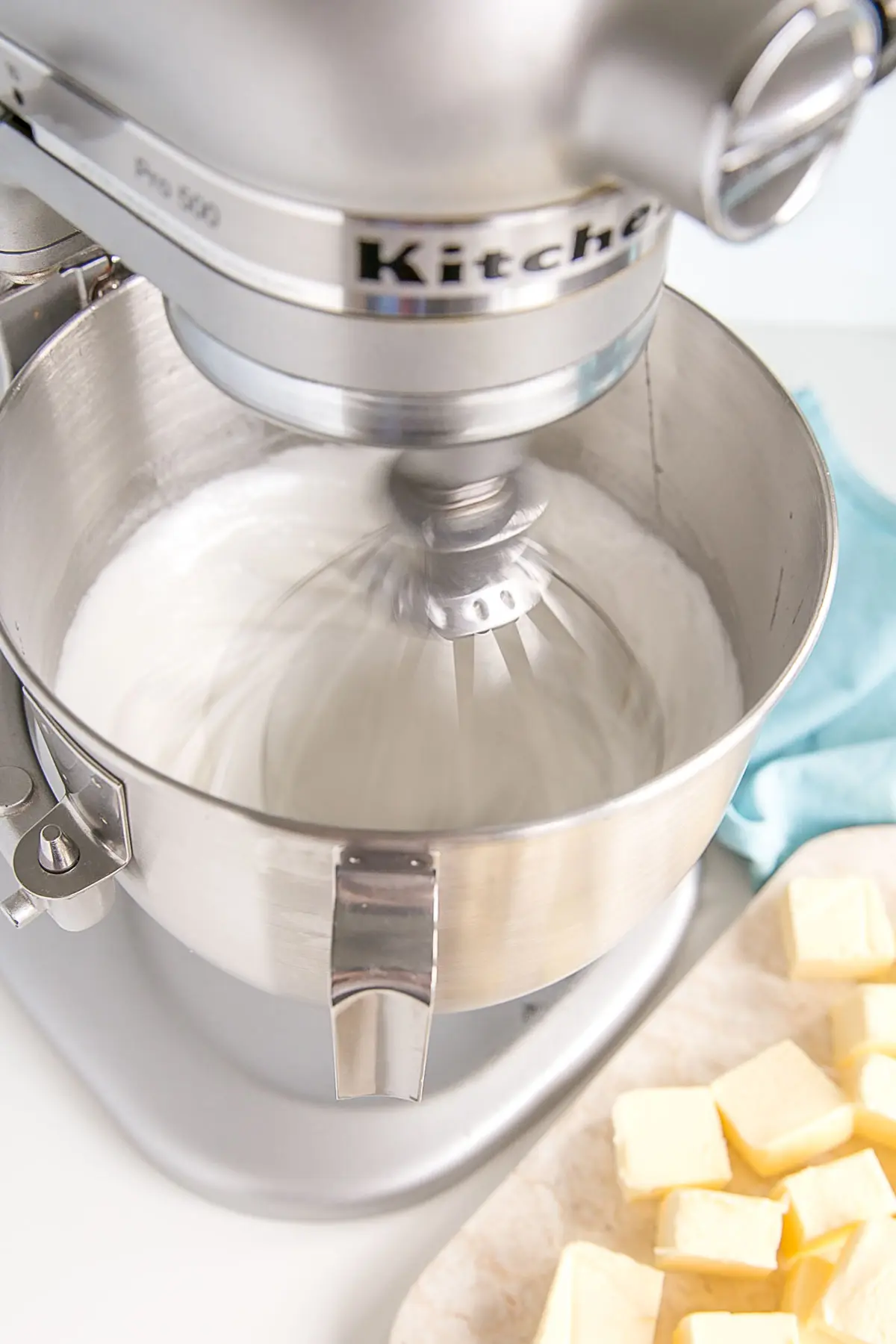
You’ll know if your meringue was successful if it holds a stiff peak. This is what it should look like – no droopy peaks!
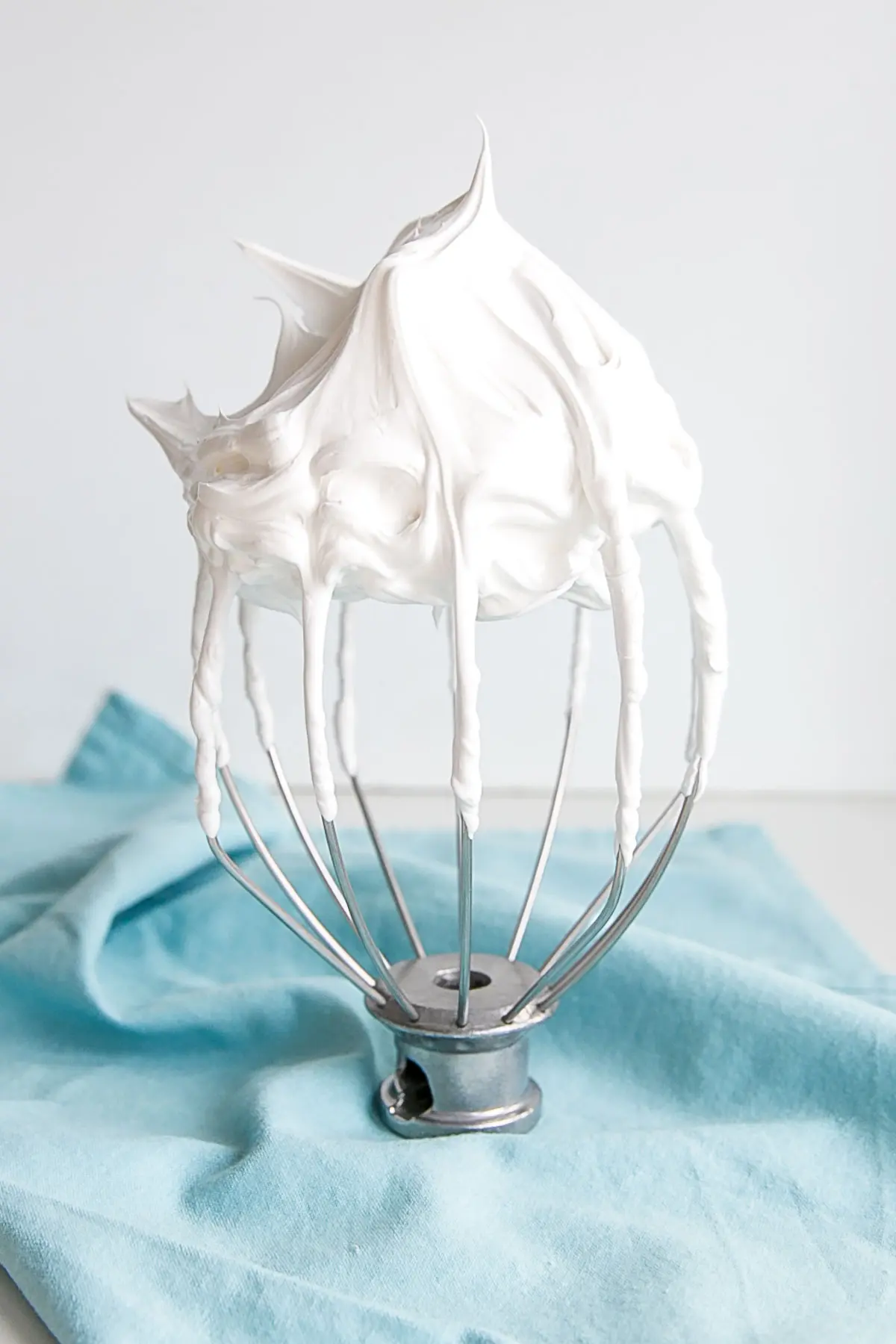
If your meringue is droopy, it was likely affected by either grease, yolk, or carton whites. See step #1. Unfortunately, if this happens, you will need to start over. There is no way to save the meringue at this point.
Step #6 – Cube your butter
While the meringue is whipping, cube your softened but still slightly cold butter. I roughly do 1″ or so cubes. It’s not an exact science, about 1 Tbsp or so each.
You will know your butter is the right consistency when you can press it with your finger and leave a bit of a dent in it.
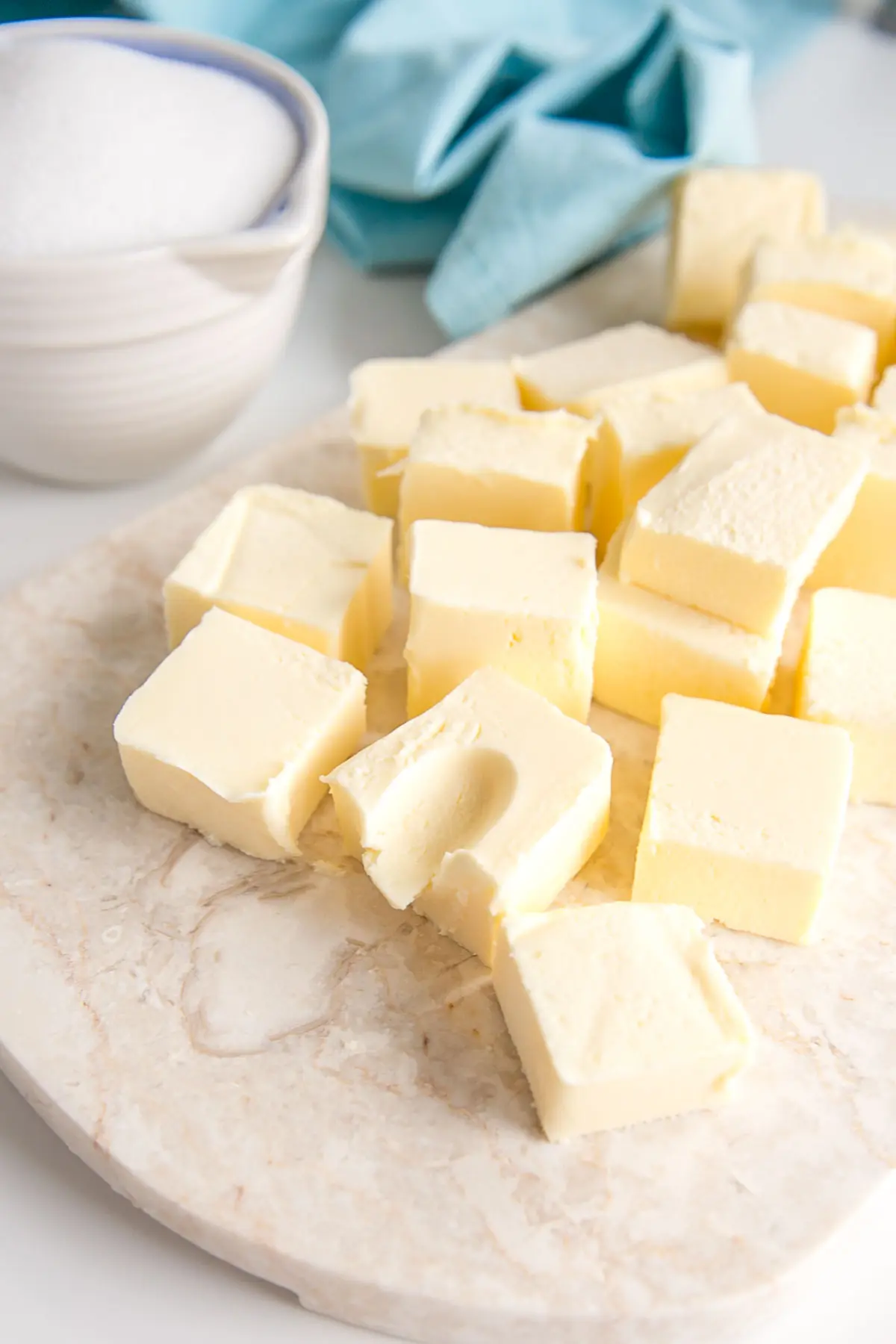
It’s important to note that your butter should not be too soft. If it’s so soft that you can press your finger through it easily, it will be too soft for your buttercream.
You can still use it, but you may need to chill your buttercream for a bit if it becomes soupy (see the Troubleshooting section below). I find it easier to deal with an SMBC that has used butter that’s too cold vs too soft.
Step #7 – Add the butter
When your meringue is completely cooled, stop your mixer and switch to the paddle attachment.
This isn’t critical, you can leave it on the whisk, but I like to switch to the paddle as I find that the whisk can incorporate too much air into the buttercream.
I also like that my paddle scrapes the sides of the bowl for me, which is a time saver.
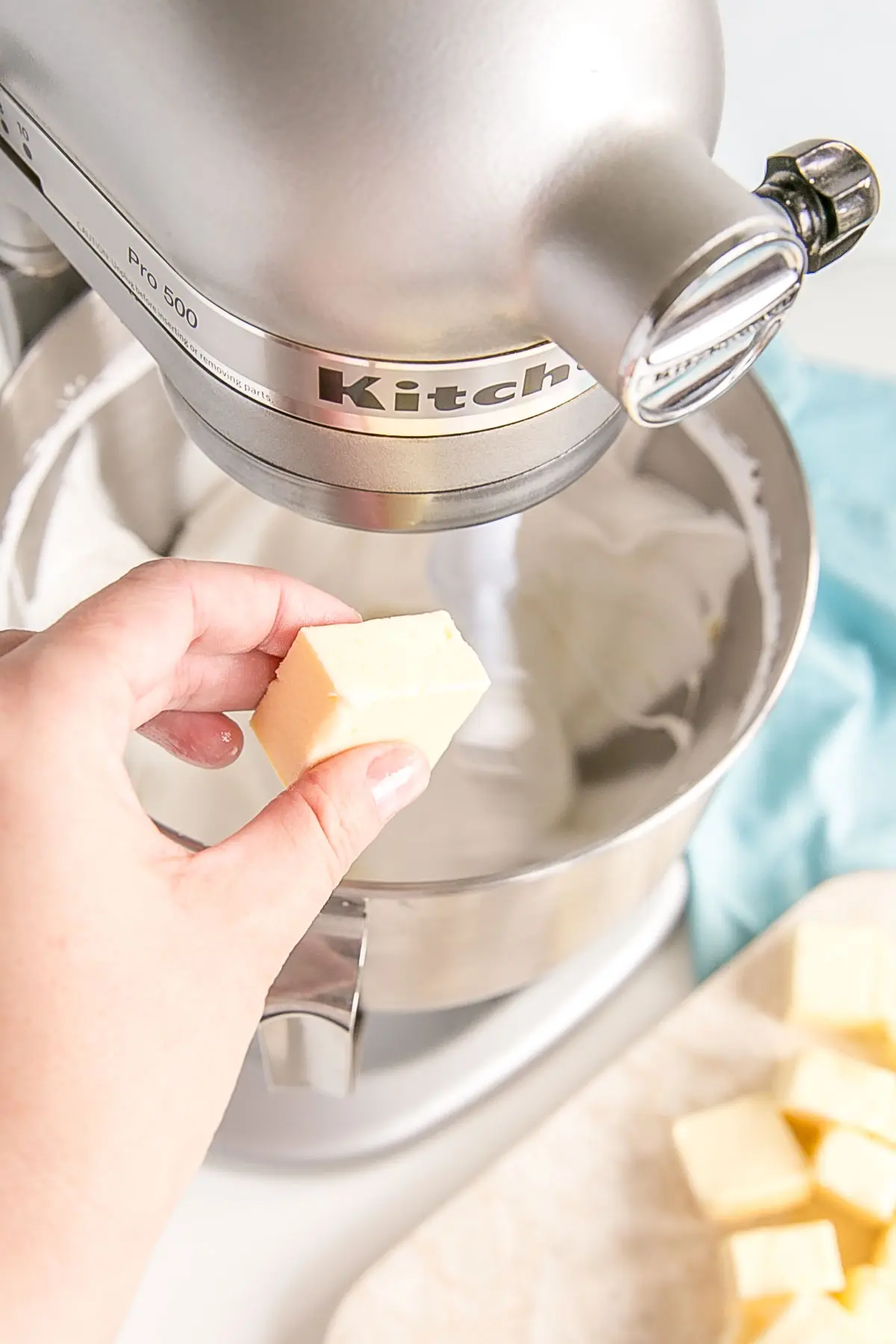
Set your mixer to medium speed (4 or so on a KitchenAid) and slowly start to add your butter cube by cube. Once all of the butter has been added, crank the mixer back up to high to beat the buttercream.
The buttercream can go through a few undesirable stages while it mixes. It can become soupy:
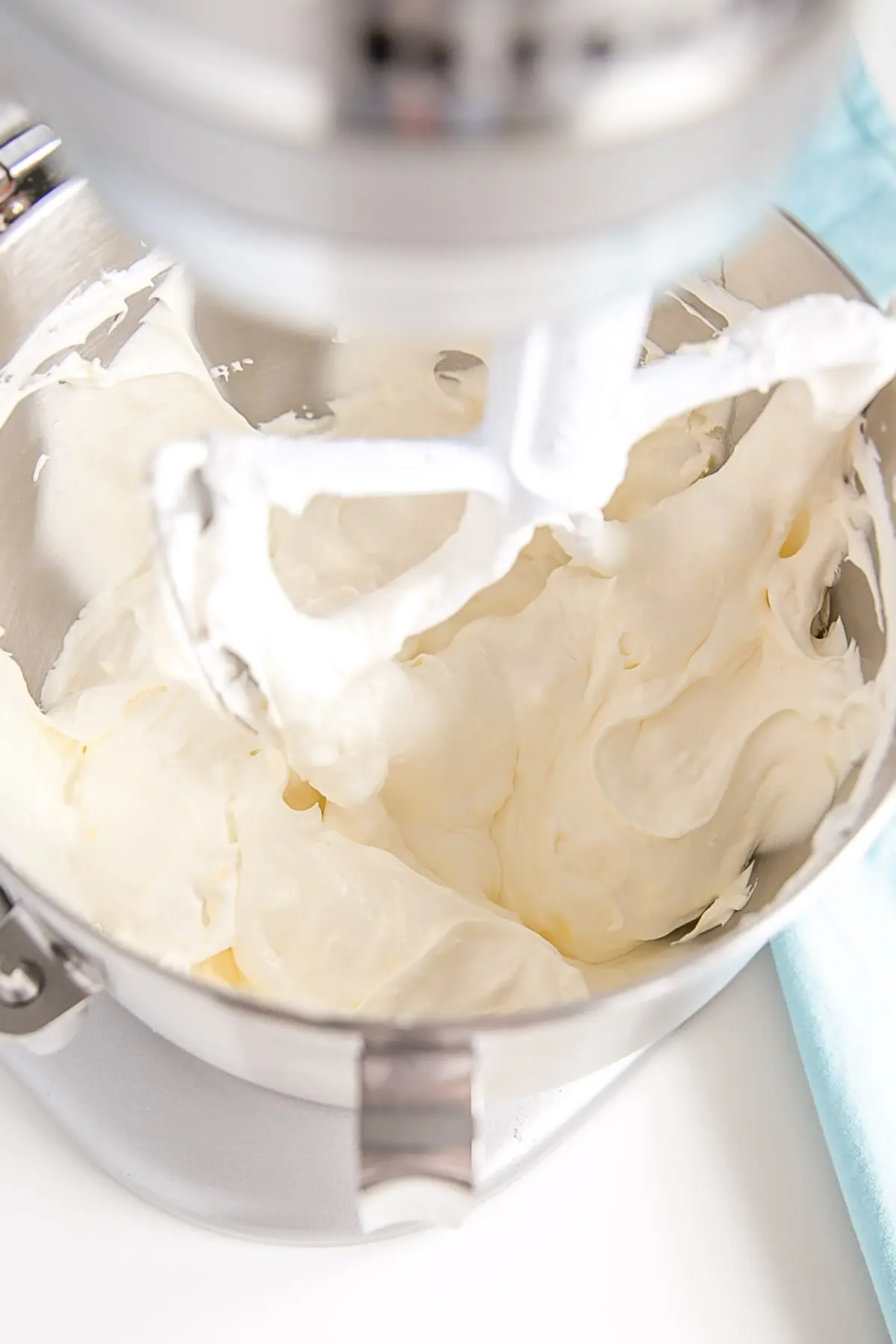
And it often curdles:
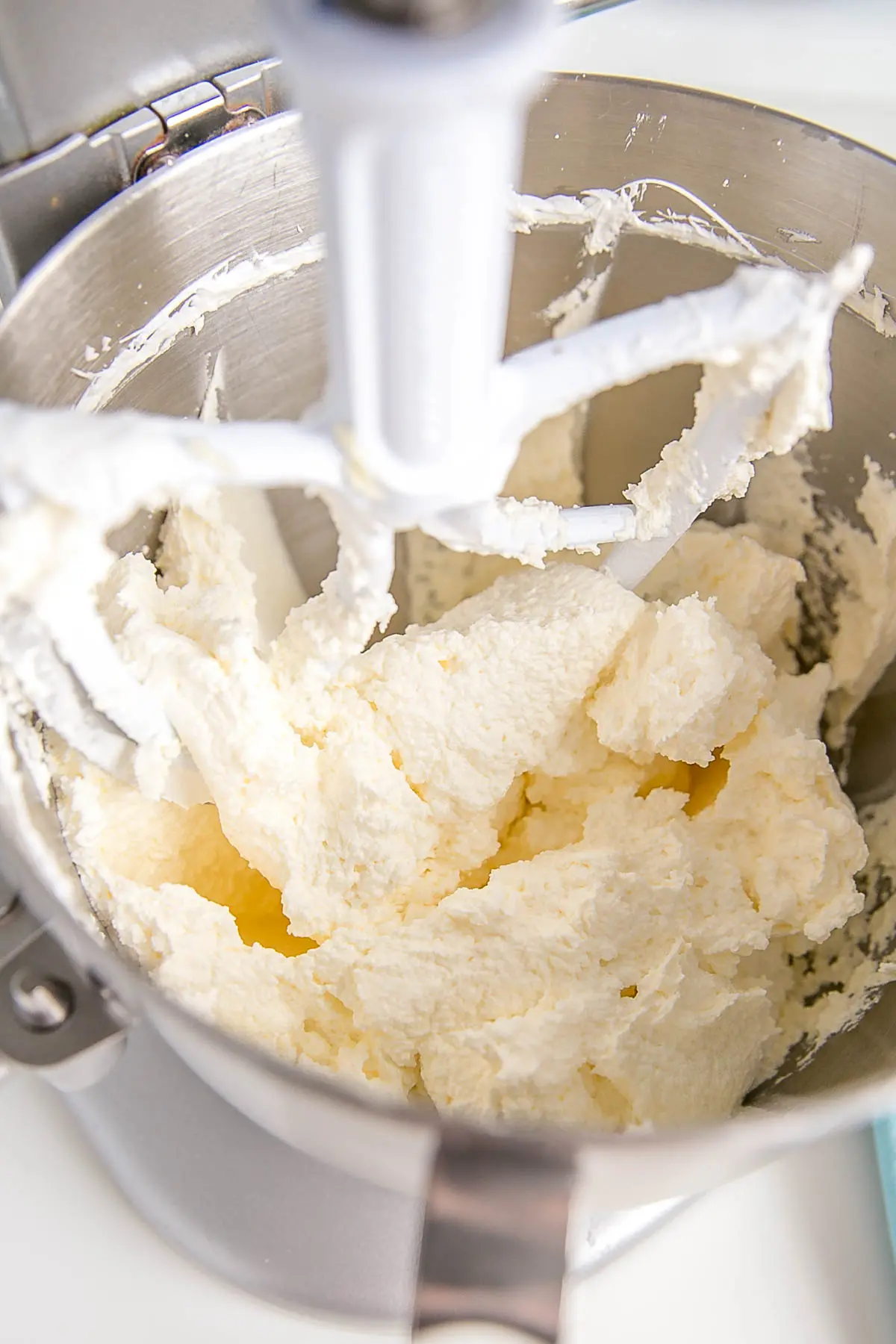
I find it best to walk away and come back after 5 mins to a (hopefully) perfect SMBC. See the Troubleshooting section below if this is not the case.
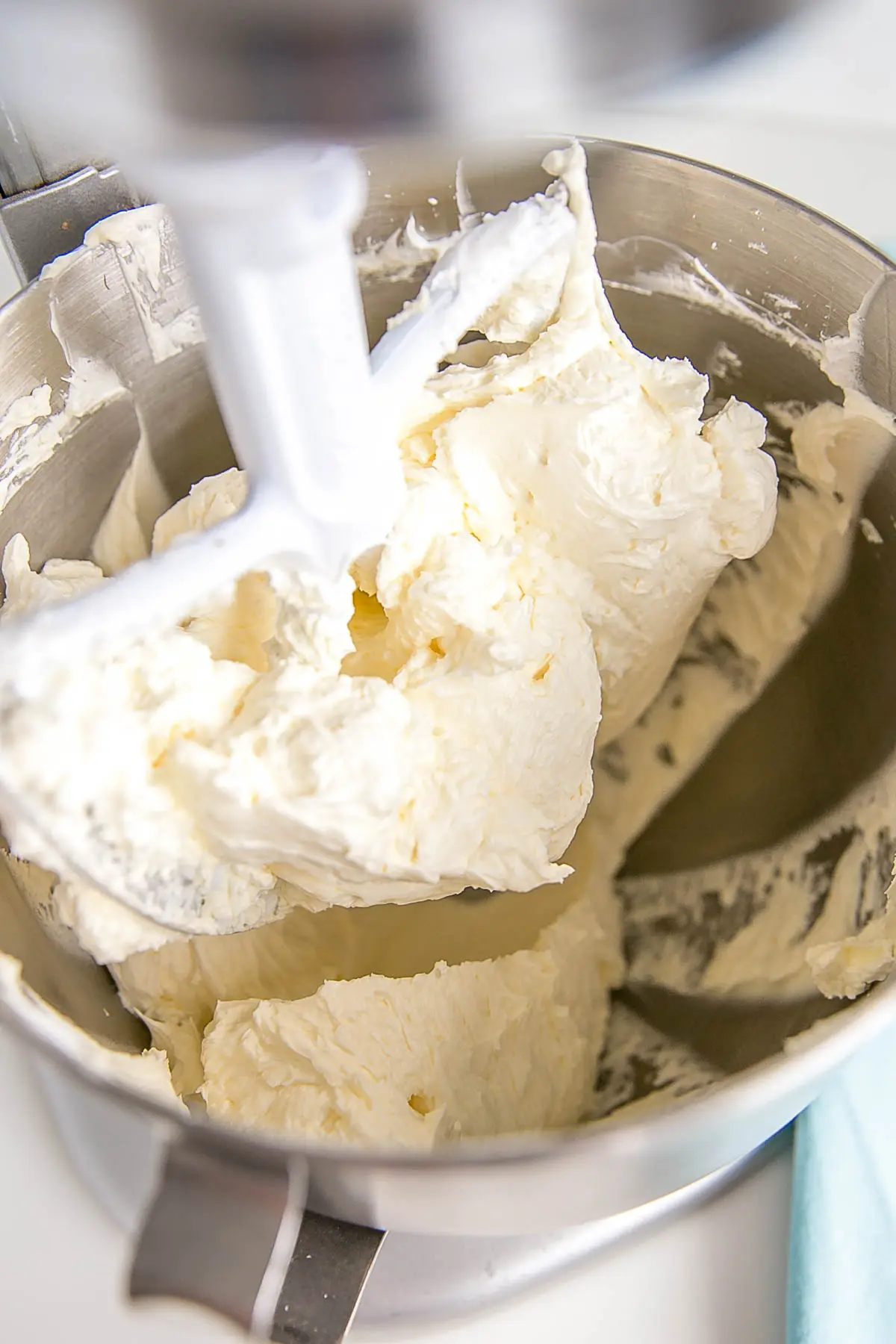
Once the buttercream is completely smooth, fluffy, and creamy, you can add in your flavorings (see below for a list of recipes).
How do I make my buttercream white?
This is a bit off topic, but also comes up often. SMBC can turn out a bit yellow depending on how much butter you use. This is not always a desirable effect, especially if you’re going for an all white cake.
The trick is to neutralize the yellow color by adding a bit of blue/violet to it.
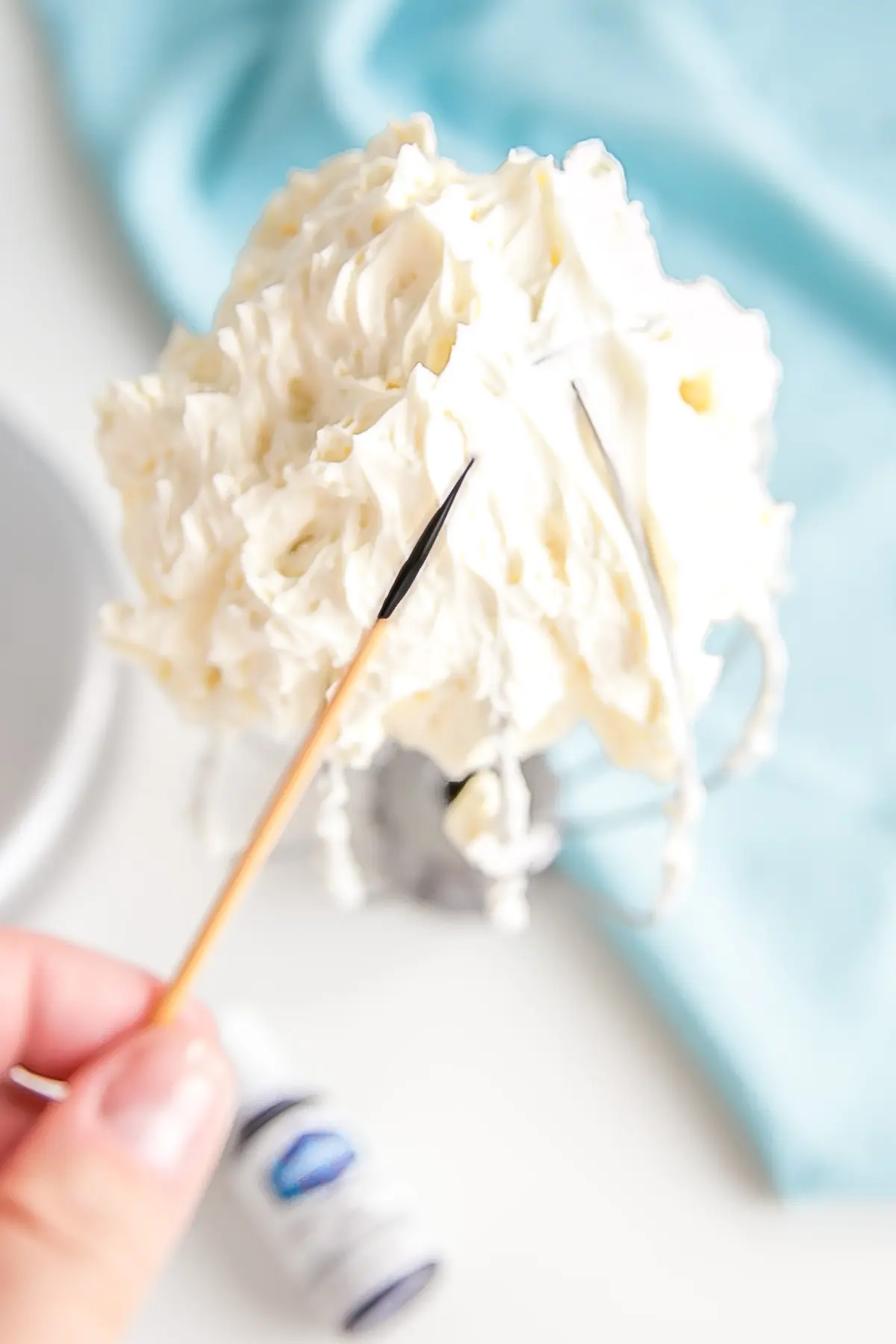
And I mean a bit. The amount on the toothpick above is more than I added. I basically swiped the toothpick over the buttercream on the whisk, so really only used one side of it.
I’d recommend starting with less and adding more as needed, or you’ll end up with a grey or bluish-looking buttercream.
Once the gel has been added (I used Americolor Violet), give the buttercream a good whip and you’ll see the yellow tint fade away. Add more color gel as needed.
Be sure to check out my detailed tutorial on How to Make Buttercream White for other tips.
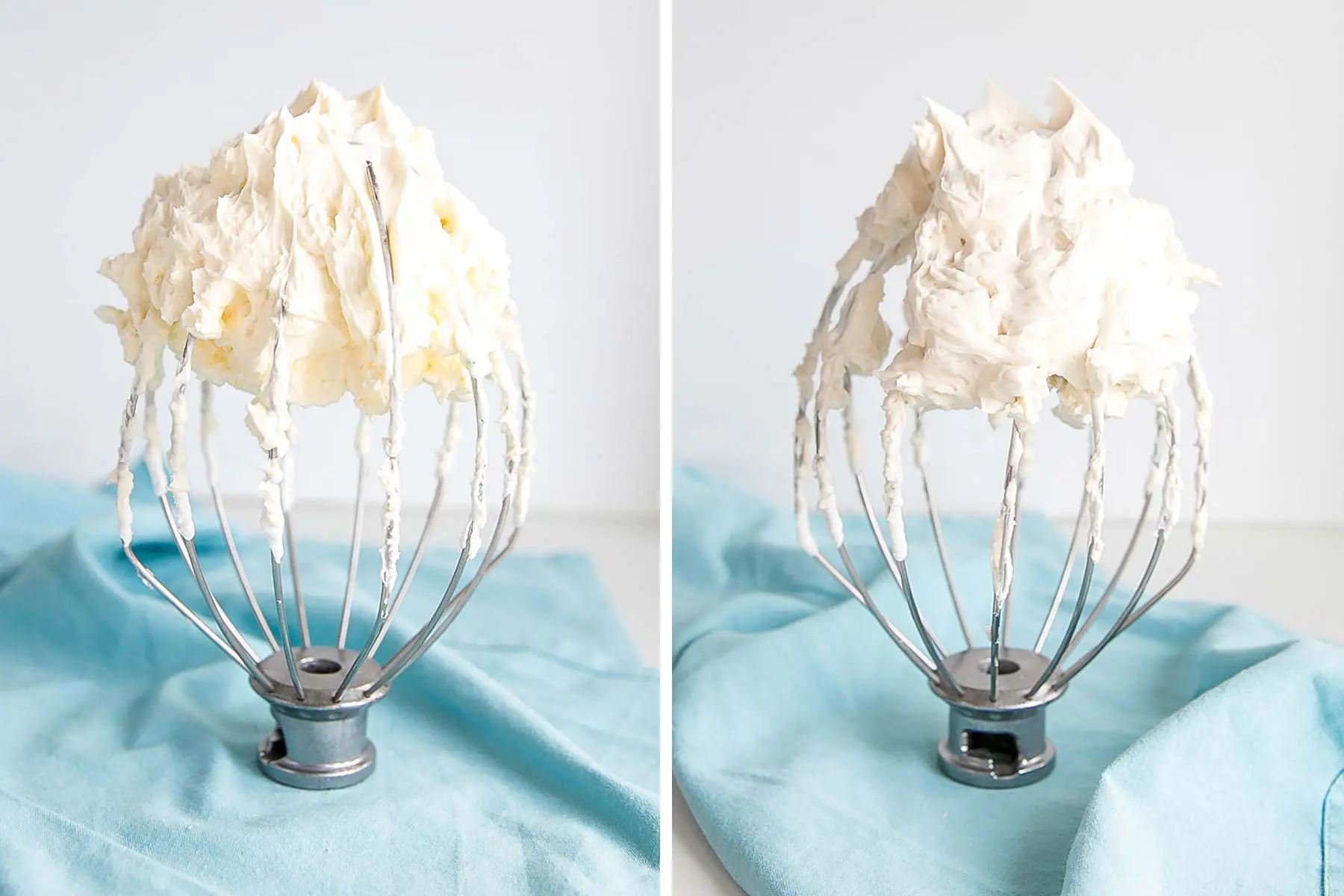
Troubleshooting Swiss Meringue Buttercream
Swiss meringue buttercream can be finicky. It’s temperamental and can cause a whole lot of unnecessary stress. The good news is that as long as your meringue was stiff before the butter was added, whatever issue you encounter after that is fixable.
Here are some common issues you may run into while making Swiss meringue buttercream, as well as my tips and suggestions on how to avoid/fix them:
- My meringue won’t whip up. This is either due to grease or egg yolks or both. See Step #1 of the tutorial above.
- My buttercream looks curdled. This is a common step when making SMBC. Once all the butter is added, it often goes through a phase where it looks curdled. If you keep whipping it, it will come together.
- My buttercream still looks curdled. If the temperature of the butter is too cold, it can be harder to get it to come together. You can either put it over a double boiler again like in Step #2, or warm the sides of the bowl with a hair dryer. One time, I had thawed some frozen SMBC and I didn’t completely bring it to room temperature before rewhipping. It looked like cottage cheese soup in my mixer. I thought it was a lost cause, but I heated the bowl a bit with a hair dryer and walked away for a few mins. When I came back it had come together perfectly! If you use the double boiler method, warm the buttercream just until the very edges start to melt, and then rewhip. You can also try to microwave 1/4 cup of the buttercream for a few seconds then drizzle it back into the buttercream with the mixer on low speed until it comes together.
- My buttercream is soupy. This is the opposite problem of curdled buttercream. This occurs because either the meringue was too warm when you added the butter or your butter was too soft, or both. Pop the whole bowl and whisk into the fridge for 20mins and then rewhip. Depending on how warm it was, you may need a couple of sessions in the fridge.
- My buttercream is grainy. This is due to the sugar not being dissolved properly in Step #4 above. Once the meringue is whipped, there is nothing you can do to fix this. It’s best to start over.
- My buttercream is greasy. SMBC is more buttery than an American buttercream, but it should not feel greasy. If you haven’t added more butter than the recipe calls for and your meringue was stiff, then the greasiness is likely due to the buttercream not being whipped for long enough. It’s also good practice to rewhip the SMBC if it’s been sitting out on the counter for a while.
- The buttercream gets hard in the fridge. This is normal. Just like the butter it’s made from, it will firm up to the consistency of butter in the fridge. When you let it come to room temperature it will soften again.
- It tastes too buttery. Some people just don’t like meringue buttercreams — they’re not for everyone! But the buttercream should be light and fluffy, not thick and greasy. If yours tastes like you’re eating a stick of butter, perhaps your meringue wasn’t whipped to stiff peaks before adding butter, or the butter was too cold, in which case it just needs some more whipping. Or you added too much butter.
Frequently Asked Questions
- Can I make Swiss meringue buttercream in advance? Yes! You can leave it at room temperature for a day or two, refrigerate for up to two weeks, or freeze it for up to 3 months. Be sure to store it in an airtight container. You must bring the buttercream completely to room temperature and rewhip before use. If the buttercream separates, it was still a bit too cold. See Step #3 above in the Troubleshooting section.
- How do I thaw my buttercream? Thaw it on the counter. It will be too hard if you thaw it in the fridge. I thaw mine overnight. Rewhip before use. See above.
- How long does Swiss meringue buttercream last? It will last for a day or two at room temperature, 2 weeks in the fridge, and 3 months in the freezer. Be sure it is properly stored in an airtight container or a freezer bag.
- Is Swiss meringue buttercream safe to eat? Yes. If you cook the eggs to 160F the buttercream will be safe to eat.
- Can I flavor Swiss meringue buttercream? Yes. Once the buttercream has come together, you can add any kinds of flavorings, extracts, powders, or chocolate — see list below for a list of recipes.
- Can I color Swiss meringue buttercream? Yes. Though SMBC is more difficult to color than an American buttercream. The color doesn’t take as well, so you may need more color gel. Be careful not to add too much, as the buttercream may split. You may want to look into powdered food coloring if you’re wanting to do very vibrant colors. I don’t recommend using liquid food coloring as it is not intense enough an can cause the buttercream to split. For more tips on getting rich, dark colors with SMBC see my Chocolate Peppermint Cake post.
- I don’t have a stand mixer. Can I use my hand mixer to make Swiss meringue buttercream? You probably can, but I do not recommend it. You’d be whipping forever! First to cool the meringue, and then when the butter is added. It can be a 10-15min process with a stand mixer, so I imagine it could take twice as long. So… doable if that’s all that you have at your disposal, but just know you’re in for a long haul.
Swiss Meringue Buttercream Recipe
The recipe I’m including below is the standard SMBC recipe that I use, though I tend to experiment a lot with it and sometimes add an extra egg white or use a bit less butter, depending on the amount of frosting I need.
I haven’t run into any issues doing this, but it’s important not to add more butter than the recipe calls for unless you’re also increasing the egg whites & sugar.
Swiss Meringue Buttercream Variations
- Blueberry (or any kind of berry)
- Brown Butter
- Brown Sugar
- Caramel
- Chocolate
- Cinnamon
- Coconut
- Dulce de Leche
- Espresso
- Honey
- Maple
- Mint
- Mocha
- Peanut Butter
- Vanilla
- White Chocolate
I hope you’ve found this guide helpful and that it’s given you the courage to give Swiss Meringue Buttercream a try! It truly is one of the most delicious buttercreams out there.

Swiss Meringue Buttercream Recipe
Ingredients
- 6 large egg whites
- 2 cups granulated sugar
- 2 cups unsalted butter softened but still a bit firm, cubed
- vanilla or other flavoring to taste see post for options
Instructions
Swiss Meringue Buttercream
- Place egg whites and sugar into the bowl of a stand mixer, whisk until combined.
- Place bowl over a pot with 1-2" of simmering water and stir constantly with a whisk until the mixture is hot and no longer grainy to the touch or reads 160F on a candy thermometer (approx. 3mins)
- Place bowl on your stand mixer and whisk on med-high until the meringue is stiff and cooled (the bowl is no longer warm to the touch (approx. 5-10mins)).
- Switch to paddle attachment (optional). Slowly add cubed butter and mix until smooth.
- Add flavorings as desired whip until smooth.
Notes
- This recipe makes enough to frost a two layer 8″ cake or a three layer 6″ cake.
- The recipe can be made with 3 cups of butter instead, if you need more frosting.
- See blog post for tips and troubleshooting.
Updated Nov 2, 2022. Originally published Jan 2, 2019

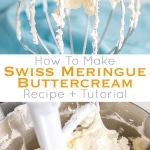

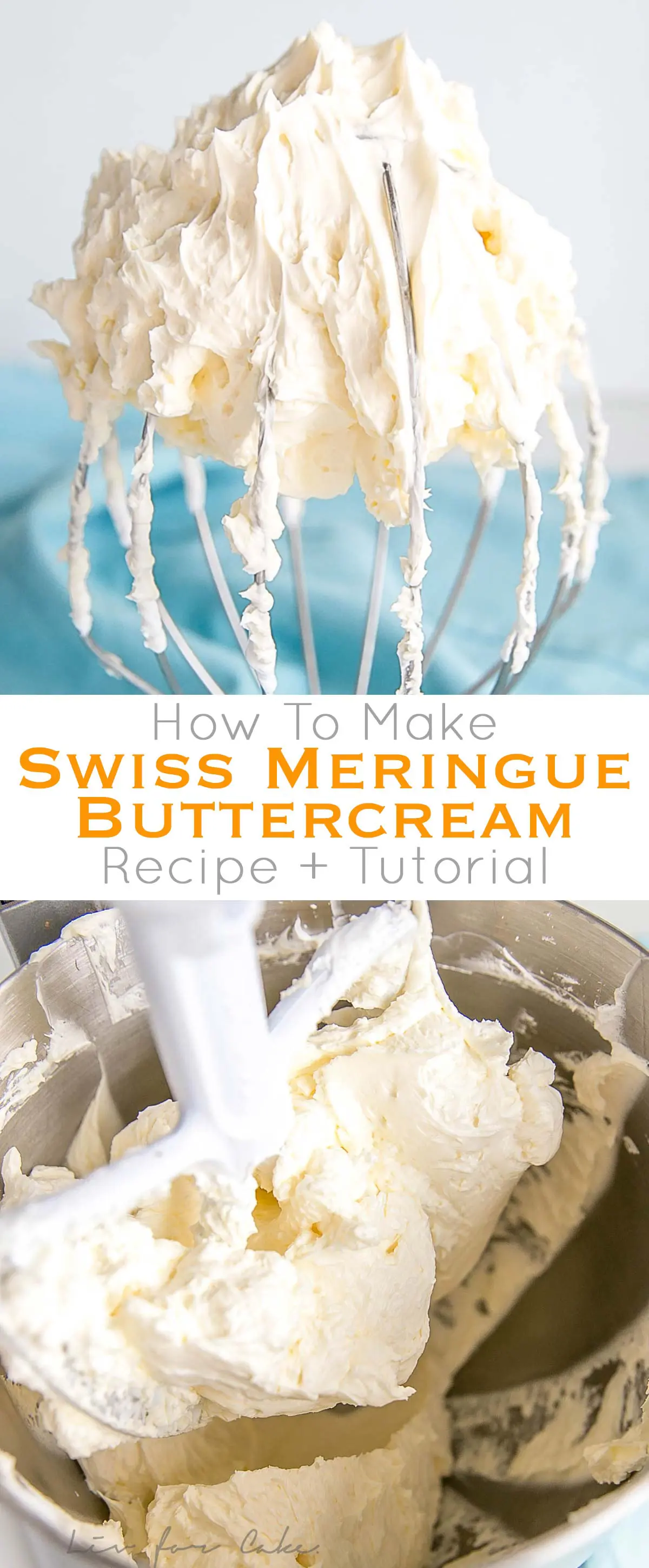
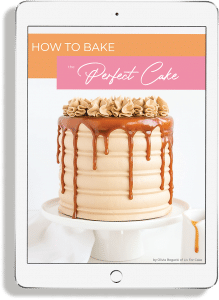










Enisa says
Hi Olivia my stand up mixer bowl is made of plastic. Would the be ok to use to make Swiss morangue in? You mentioned metal is the best as cools quicker …
Thankmyo for thorough instructions.
Olivia says
Hi Enisa! My worry about the plastic is that plastic tends to hold grease, not matter how well it’s cleaned, so I’m not sure that the meringue would whip up properly. You can definitely give it a try though!
Chrisanne says
OK. That is it! I will never use store bought frosting again. This was my first time making SMBC. I read the instructions and the hints and the troubleshooting and away I went!! It was amazing! I was patient and walked away..and it was beautiful! Thank you, Liv!
Olivia says
Hi Chrisanne! So happy to hear that. I’m glad I’ve converted you! 🙂
Jess says
Have you ever had your mixer bowl not cool down? I had mine off the water and whipping for 20 minutes, and it still wasn’t cool. That said, can you over whip it?
Olivia says
Hi Jess! Are you using a glass bowl by chance? Those tend to retain hear more. I suspect that at some point it will become overwhipped. To help the cooling, once it’s stiff, you can place a bag of frozen peas or similar under the bowl.
Nev says
Thanks heaps, ill give it a try, im trying to make a kinder bueno cake 🙂
Nev says
Hi Liv, would it work well with kinder chocolate And how much do i add to this recipe? Thanks 🙂
Olivia says
Hi Nev! I haven’t tried that myself but suspect it would be fine. I would add 6-10oz of cooled, melted chocolate. Depending on how strong you like the flavour.
Katherine EVANS says
Can i use Caster sugar ? Also how much melted white choc do i add to the recipe please ?
Thanks
Olivia says
Hi Katherine! Yes, caster sugar will be fine. I would add about 60g of melted (cooled) white chocolate.
Sara says
Hi! Everyone raves when I use your recipes! I am newly unable to tolerate dairy, have you ever used ghee or clarified butter in this recipe?
Olivia says
Hi Sara! Thank you! I have only made this with real butter and am not sure it would work well with something else 🙁 You can give it a try though if you’re up for experiementing!
Rahul says
Hi Liv! I love your recipes! I made your Swiss meringue buttercream today! When putting the egg white with the sugar over the ban marie I made sure that the sugar was dissolved and was not grainy (I did this over a medium to low heat for about 7 minutes). However, upon reading your notes you mention that the mixture egg white/sugar mixture should be hot and I don’t think mine was I think it was Luke warm. I live in the UK, is this still okay or do I have to remake the buttercream?
Olivia says
Hi Rahul! Do you know if the eggs you used were pasteurized? From a food-safe perspective, the eggs should be hot enough so that they’ll cook out any potential bacteria. People do eat raw eggs without issue, but it really depends on if you or anyone that will be eating the cake could be affected by it. Raw eggs should not be consumed by pregnant women, small children, or anyone with health issues. For next time, if you have a thermometer you can use that to check if the eggs are warmed enough. It should be to 160F.
Rahul says
Hi Olivia! Thank you for replying so quickly, I am in a little bit of a panic :(( ! The hens here are vaccinated against salmonella and when I searched up online I believe that in the UK raw eggs can be consumed. However, do you recommend that I make a new batch?? Will most definitely be making sure any future batches are well heated through.
Inga says
How can I flavor it for lemon, don’t see that option and I’m afraid lemon juice would curdle? Don’t like the flavor of even the pure extract, am going to add zest, but not sure it will be enough..a little curd maybe? Am making it anyway for the filling..Thanks!
Olivia says
Hi Inga! Curd would definitely incorporate best and add most flavour 🙂
Diane B says
This is the first time I’ve made this. Your recipe and hacks have been very clear and helpful. Thank you.
Olivia says
Hi Diane! So glad you found it helpful 🙂
:D says
Hi, why did it take 50 mins. for me to whip egg whites to stiff peaks? I have a 1.3 hp mixer.
Olivia says
Hi there! It should definitely not take that long. Did you increase the recipe at all? And did you make sure everything was wiped down with lemon juice/vinegar before hand? It should only take a few mins to get to stiff peaks and then a few more to cool to the point where you can add the butter.
Ann says
Tasted amazing! How much would I need for 5 dozen standard size cupcakes?
Olivia says
Hi Ann! The recipe here will frost about 18-24 depending on size.
Amy says
This tutorial was very helpful. I have struggled with getting SMBC to be the correct texture. This tutorial gave me the information to understand what I had been doing wrong but also my SMBC came out wonderful after following this guide. Thank you.
Olivia says
Hi Amy! I’m so thrilled that this helped you make a successful SMBC 😀
Andrea Green says
How much do you use for 1 cup butter in grams?
Olivia says
Hi Andrea! There is a metric button in the recipe card that will convert everything for you. 1 cup of butter is 227g.
David says
My mix is too sloppy, I have put the bowl in the fridge but would adding more sugar thicken the buttercream. The meringue was perfect til I added the butter!
Olivia says
Hi David! No, it sounds like the meringue and/or butter were too warm. A few sessions in the fridge, whipping in between, will make it come together! See post for detailed tips and troubleshooting.
VS says
Hi Olivia,
I want to make a double batch of this for a 3 tier cake.
Can my 5 quart KitchenAid handle it?
Olivia says
Hi VS! No, I think that may be too small. I would make two separate batches.
AQ says
Hi!
I have to make a red velvet cake and drive it 90 miles to the event venue. I wanted to fill it with cream cheese frosting and cover it with your Swiss Meringue Buttercream.
Do you think this frosting will stay firm and the cake will stay in tact through the 1.5-2 hr drive. Please do recommend any other frosting that will stay intact/sturdy. I just wanted some less sweet frosting to cover the cake, but am worried about the structure of the cake not staying proper by the time it arrives.
Olivia says
Hi AQ! The best for sturdiness would be a ganache. It sets quite firm and doesn’t soften as quickly as a buttercream. That being said, if you frost with SMBC and freeze the whole cake, you should be fine for the 2 hours drive provided it’s not hot where you are. Even a refrigerated cake might do ok as long as you keep it cool. Can you transport in a cooler?
Stacey says
Hello. I just made your Nutella SMBC for the first time (so delish). I’m in Australia and we’re heading into summer here so it’s very very hot. I have the cake in the fridge but not too long after I take it out, the icing goes quite soft. Is this normal in warmer weather? I think I did all the steps right and had stiff meringue peaks. I wonder if in my climate I’m better off making an American butter cream or something a bit more sturdy
Olivia says
Hi Stacey! It will be very soft at room temperature and even moreso in hot weather. American buttercream is more stable in warmer temperatures for sure, but if you’re using butter (some use shortening) it will get soft too. Not as soft as a meringue buttercream though.
Kat says
Hi I’m using your recipe for the 100th time as I love it and I am just wondering what the measurements would be for a 3 layer 8inch cake??
Olivia says
Hi Kat! I am so happy you love it. I have used this same recipe but with 3 cups of butter instead for a three layer 8″ cake. If you’d rather scale proportionally I would change the Servings to 8.
Andy says
Hi just wondering when adding flavourings how much would you add for example melted chocolate so it won’t affect the buttercream
Thanks 😊
Olivia says
Hi Andy! I would add up to about 10oz to this recipe here. I have a chocolate version here: https://livforcake.com/chocolate-cake-recipe/ Make sure the chocolate is completely cool to the touch before adding it.